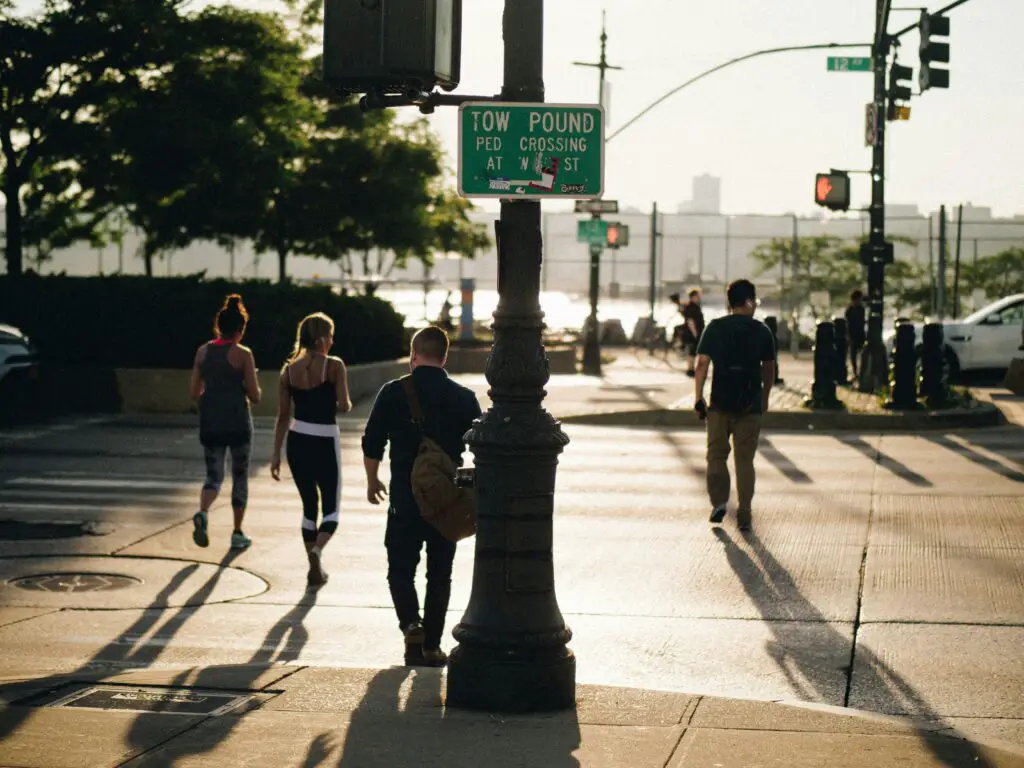Related Posts
When you think about car accidents, what image comes to mind? If you are like most, you may have thought about high-speed police chases or crashes on bustling city streets. Although these are some everyday situations in which accidents may occur, many people don’t realize just how common parking lot car accidents are. With a confusing mix of pedestrian right-of-way rules and confusingly close-quarters driving, it is no wonder why parking lots are a common site for minor accidents.
In the worst cases, parking lot accidents can involve people walking to and from their cars. Designated pedestrian right-of-way rules aim to limit potential accidents, but they don’t always succeed. For instance, the viral clip below shows a tragic pedestrian-car accident.
Viral Pedestrian Accident
A store or restaurant security camera captured the video showing the pedestrian accident. In the footage, someone (likely an employee) runs across the parking lot. They quickly jut between rows of cars, moving through lanes where traffic would drive. As they almost reach the parking lot, a vehicle comes across one of the lanes. It seems they cannot stop, leading them to collide directly with the pedestrian.
The rest of the footage is censored, but outside sources confirm that the person in the video was fine after the incident.
Who’s Responsible for This Parking Lot Accident?
According to famous TikTok attorney Ugo Lord, pedestrians always have the right of way in a parking lot. This is true for both private and public properties. Authorities establish pedestrian right-of-way laws like this to protect pedestrians, who are essentially defenseless against collisions with vehicles.
At the same time, pedestrians cannot randomly weave and run between lanes, especially when cars are moving nearby. In addition to the car likely having little reaction time to stop, the pedestrian’s actions were the leading cause of the collision.
Assuming no outside factors led to the accident, the pedestrian would be liable for their injuries.
Parking Lot Right of Way Rules

As you may know, parking lots are the sites of thousands of crashes every year. Luckily, most parking lot crashes are minor; however, some instances involve pedestrians. Numerous right-of-way rules specifically apply to parking lots to help reduce the occurrence of crashes. Some of the most important parking lot rules are:
- When leaving a parking spot, you must yield to oncoming cars driving through the main lane.
- Cars driving through lanes designated for parking have the right of way, but they must remain ready to stop for vehicles exiting parking spots.
- Special signage within parking lots overrides traditional parking lot rules.
- Cars should drive at a maximum speed of 15 mph within parking lots unless otherwise stated.
In addition to these basic rules, different jurisdictions or individual parking lots may have unique rules that dictate the right of way in lots.
In parking lots, drivers should exercise extreme caution to avoid unnecessary accidents. According to most studies, at least 50% or more of parking lot accidents result from distracted driving. Some common distractions could be driving with your phone, driving while eating, or driving while talking to others. Some other reasons people report lead to parking lot accidents are confusion, poor visibility, unexpected driving situations, and driving too fast.
Pedestrian Right of Way In Parking Lots

Just like the rules for cars, some rules dictate the proper behavior of pedestrians in parking lots. These rules are important for equipping people with guidelines to help prevent pedestrian accidents. Some important pedestrian right of way rules are:
- Vehicles must always yield to pedestrians, even if they are walking in an undesignated area.
- While it isn’t illegal to walk in undesignated areas, pedestrians should be aware of their surroundings and cannot walk or run in front of vehicles. This is especially true when a pedestrian walks in front of a vehicle that would not be able to stop quickly.
- When yielding to a pedestrian, cars cannot overtake each other.
- Pedestrians should be ready to yield to cars unless otherwise permitted when not in designated areas.
- Pedestrians should use sidewalks, intersections, and other designated walking areas whenever possible.
Generally, most pedestrian right-of-way rules outline where people should walk and what they should expect when near cars. As you can probably tell, most rules grant pedestrians the right of way. This is because pedestrians are the most susceptible to incurring damages in the event of an accident.
What To Do If You Are in a Parking Lot Accident
If you find yourself in the unfortunate situation of a parking lot accident, try to remain calm. If necessary, call the police to mediate or make a formal report. For example, if a car involved drives away or someone suffers a serious injury, call the police immediately.
After this, exchange information and insurance details with all parties involved. Document any damages (vehicular and personal) and treat them as well as possible.
Following the event, report your accident even if the police didn’t come to the scene. Likewise, following up with your insurance is the most recommended path to fix damages. In Washington state alone, pedestrian accidents increased by 62.5% from 2010 to 2019. While the issue isn’t fully solved, we can look at these detailed pedestrian right-of-way rules to remember exactly how to stay safe in parking lots.

